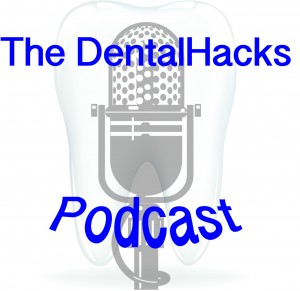I had two patient interactions this week that got under my skin. I hesitate slightly to write about them because they may come across as petty to some. But I think they illustrate an interesting perception about dentists and maybe health care providers in general.
The first thing was a patient that came in with “an emergency.” In my office, the patient gets to decide what an emergency is. We go out of our way to see people with emergencies as soon as we can. Quite often we see emergencies the same day that they call. This patient had made an appointment to be seen by a hygienist the day before and didn’t show up. They also didn’t call. Honestly, that’s strike one. I feel like grown ups that schedule their own appointment should be able to show up and if they can’t, a phone call or some other acknowledgement is the least a patient can do unless there’s some kind of emergency that keeps them from contacting us (which of course, we understand). As you may have guessed, the patient has missed appointments before. Furthermore, the patient showed up 15 minutes late for their “emergency” appointment the day after. No apologies for being late. Nothing.
I saw the patient and was pleasant and professional, but purposefully aloof. We took care of the emergent problem and made a plan for a long term fix. I probably was not my normal “bubbly” self. Frankly, I was annoyed. The patient didn’t show the day before, showed up late today and had an “emergency” that consisted of a broken tooth that has been treatment planned to fix for years. Literally years.
 Later that day we received a phone call from this patient. They wanted to give us some customer service tips. They told us that because we didn’t seem all that busy that I should have spent more time explaining what I was going to do instead of chit chatting about things that didn’t have to do with the patient.
Later that day we received a phone call from this patient. They wanted to give us some customer service tips. They told us that because we didn’t seem all that busy that I should have spent more time explaining what I was going to do instead of chit chatting about things that didn’t have to do with the patient.
You can’t make this stuff up.
The second interaction happened later in the week. We got an “emergency” call from a patient that we hadn’t seen for a long time. They prefaced the call with “I don’t have any money…” Of course we saw the patient, did and exam and made a plan. Furthermore, we helped explain ways that we could help them afford dental treatment and even helped them find another provider that might take their government provided dental benefits.
I understand that some people aren’t in a position to pay for ideal dental care. I feel bad for them and we always go out of our way to try and help them. But I always wonder how that same phone call goes with the grocery store.
“Hello, this is Kroger. How can I direct your call?”
“I need some cantaloupe, but I don’t have any money.”
“Ummm. Well, we have cantaloupe, but we sell them for $2.15. I’m not sure what else to tell you…”
So now you’re either totally empathizing with me (which probably means you’re in the dental field or you’re some other kind of health care provider) or you think I’m an insensitive jerk. But there’s a little bit more to this.
How do people get to a point where they feel this is appropriate? I’m pretty sure it’s because we don’t think of health care providers as people. The fact that we think of them as “professionals” means that we hold them to a different standard. It’s almost like we don’t think of them as providing a service in the same way that other service providers do. Because we have specialized skills and a license granted by the state, health care professionals are different.
In fact, they are somehow less human. Doctors are not allowed to be irritated by my behavior because they’re doctors and I’m a sick person. A nurse in the ER has to be nice to me even when I’m acting unreasonably because I’m the patient and she’s the nurse. Dental offices cannot hold me accountable for appointments that I’ve made because they are health care professionals and I’m a patient.
Patients and providers alike, I’m going to let you in on a little secret. We’re all human beings first. No matter the skills we’ve accumulated and positions we hold, we’re still just relatively fragile and mostly squishy bags of emotion and meat. All the degrees and training in the world won’t change that.
Since that is undoubtedly the case, I want everyone on each side of the patient/health care provider to acknowledge this. There are always consequences to the way that you treat others. That doesn’t mean your surgeon won’t do their best for you even though you treated them like a jerk. However, they may be less likely to worry about your feelings in a post op exam. And dentists, if you’re paternalistic and not particularly kind to your patients, they may well decide to find an office that they feel like appreciates their presence more.
For the people that treat everyone poorly, there’s probably nothing that can be said that would change your behavior. But if you ever wonder why people don’t like to be around you very much, you might take a look in the mirror. For everyone else, I’d like to make a suggestion.
If you’re a fearful patient, be honest with your dentist. Starting the appointment with “I hate dentists” goes over differently than “doctor, I just want you to understand that coming to the dentist makes me really anxious.” I’d much rather work on a patient who tells me the latter. Dentistry has lots of options available to anxious patients to make treatment easier. But if you just tell me that you hate dentists it doesn’t help me understand your fear and it makes me think you don’t like me. Who wants to work on a patient that doesn’t like them?
As an FYI…I hear that “I hate dentists” line at least weekly. Maybe more often. Every dentist will tell you the exact same thing.
For the patient who starts the conversation with “I have no money,” it’s kind of similar. I’d much rather you tell me, “doctor, I have concerns about how much treatment is going to cost. I don’t have much of a budget for dental care right now and I need to know my options before you get going.” I don’t know a dentist in the world that isn’t going to help with that. Seriously.
The point is that health care providers put their (scrub) pants on the same way everyone else does. It’s worth remembering that they are human and have feelings just like everyone else. They are likely to respond to the way you present yourself the same way everyone else does.
Health care professionals…this works the same way for you, too.
Questions or comments? Please leave them in the comments section below or email me at alan@meadfamilydental.com. If you’re a dental peep you owe it to yourself to listen to my dental podcast. It’s called The DentalHacks Podcast and it’s made with 100% fresh squeezed awesome.


